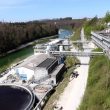More local and state control
MAP-21 includes a number of new opportunities for state and local governments to reduce delay in project delivery. One of the most significant changes to existing law is an expansion of the use of categorical exclusions (CEs) during the environmental review process. A CE is used when projects create minimal impacts on the environment. The difference between a CE and the more extensive environmental assessments (EA) or environmental impact statements (EIS) is multiple years added on to the amount of time it takes to complete a project review.
MAP-21 now automatically classifies many routine projects as CEs. Those include rehabilitation and repair projects, projects within an existing right-of-way, projects with minimal federal resources and projects undertaken as a result of an emergency situation. Expanding the use of CEs to these additional areas gives local governments more certainty as to when a CE can be used and also allows them to undertake routine projects without unnecessary levels of review.
The law also expands opportunities for state and local governments to take control over various elements of the review and approval process. States now have the option of stepping into the federal role during the environmental review process. Previously, this option was only available to five states, but MAP-21 extends it to any state wanting to participate. Delegation of the federal role in the environmental review process could help reduce delay, as states would not have to wait in line for federal approvals and schedules.
States can assume control of either the entire environmental review process or only over the CE process. MAP-21 also allows the use of STP funds to cover legal expenses from delegating environmental responsibilities. Under SAFETEA-LU, the additional legal obligations deterred some states from taking advantage of delegation opportunities. It will remain to be seen if MAP-21’s provisions encourage more states to do so.
MAP-21 provides options for reducing the amount of duplicative work in the review and approval process. Specifically, it allows for the option of using materials in the transportation planning process during the National Environmental Policy Act (NEPA) review. This would reduce delay by allowing, where appropriate, the use of material already created instead of reinventing the wheel. MAP-21 also encourages using programmatic agreements, spelling out requirements in the beginning of the review and approval process, rather than over a longer period of time. By outlining requirements early in the process, programmatic agreements provide a chance to give transportation planners increased certainty throughout the overall review process.
MAP-21 also both establishes new deadlines in the review process and tightens existing deadlines; e.g., shortening the amount of time allowed for lawsuits against projects from 180 days to 150 days. It establishes new deadlines for permitting decisions from federal agencies. If those deadlines are not met, the agencies are financially penalized. Finally, if a project is involved in an EIS for more than two years, a request may be made to have the United States Department of Transportation set a schedule ensuring the project will be completed in no more than four additional years. All of these reforms should significantly reduce the amount of time involved in the review and approval process.
The reforms in MAP-21 will make federal surface transportation investment more efficient, transparent and accountable. In so doing, the new law should help restore public confidence in the federal stewardship of transportation resources. The enactment of MAP-21, however, is not an opportunity to put these programs on auto pilot. The Highway Trust Fund again will be facing a solvency crisis at the end of FY 2014 — if not before. As such, it is imperative that the entire transportation community redouble its efforts to convince Congress to enact a long-term revenue solution to ensure the sustainability of the federal highway and public transportation programs and complement MAP-21’s many policy reforms.
Pete Ruane is president & chief executive officer of the Washington-based American Road & Transportation Builders Association.















